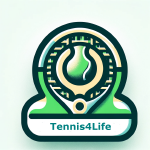The Strange Science of Recovery
In Good to Go: What the Athlete in All of Us Can Learn from the Strange Science of Recovery, science journalist Christie Aschwanden explores the fast-growing world of athletic recovery. From cryotherapy chambers and infrared saunas to foam rollers and wearable tech, the book examines what actually works—and what’s mostly hype.
Aschwanden, a former elite endurance athlete and seasoned science writer, investigates the evidence (or lack of it) behind today’s most popular recovery trends. Her tone is skeptical but grounded, offering a refreshingly honest look at a topic often driven by marketing.
Her core message: Recovery is essential—but much of what we believe about it isn’t backed by science.
Key Takeaways from Good to Go
1. Recovery is Essential—but Often Misunderstood
Recovery plays a key role in how our bodies adapt to stress, rebuild tissue, and improve performance. But many widely used recovery methods—like compression gear, cold plunges, or massage guns—lack strong scientific support. The marketing often moves faster than the research.
2. The Placebo Effect is Real and Powerful
Many recovery techniques seem to work because athletes believe they work. That belief alone can reduce the perception of soreness, improve mood, and enhance recovery. The mind is a powerful part of the recovery process.
3. Sleep is the Best Recovery Tool We Have
Science consistently shows that sleep is the most effective form of recovery. It supports muscle repair, hormonal balance, cognitive function, and immune health. No device or supplement compares to a solid night’s rest.
4. Food and Fluids: Keep It Simple
You don’t need expensive supplements or branded drinks. Balanced meals with protein, carbs, and hydration are more than enough. Aschwanden urges readers to skip the fads and stick with the basics: eat well and drink water.
5. More Isn’t Always Better
In today’s performance-driven culture, athletes often push too hard. One of the most overlooked aspects of recovery is simple rest. Taking a day off, or even doing less, can lead to better long-term results.
6. The Science is Still Catching Up
Trendy tools and protocols often go mainstream before being properly studied. Aschwanden advises a healthy dose of skepticism and encourages athletes to ask critical questions. If it sounds too good to be true, it probably is.
7. Recovery is Personal
What helps one person recover might not help another. Rituals and routines—even those with limited scientific backing—can still be meaningful. If something makes you feel better, it might be worth doing, even if the mechanism isn’t fully understood.
Wrap:
Good to Go is a thoughtful, well-researched, and sometimes funny look at how we think about recovery. It’s not just for elite athletes—it’s for anyone who trains, competes, or simply wants to feel better after exercise.
The takeaway? Recovery matters. But it doesn’t have to be expensive, extreme, or backed by influencers.
Sometimes, the most effective tools are also the simplest: rest, sleep, good food, and paying attention to how you feel.




